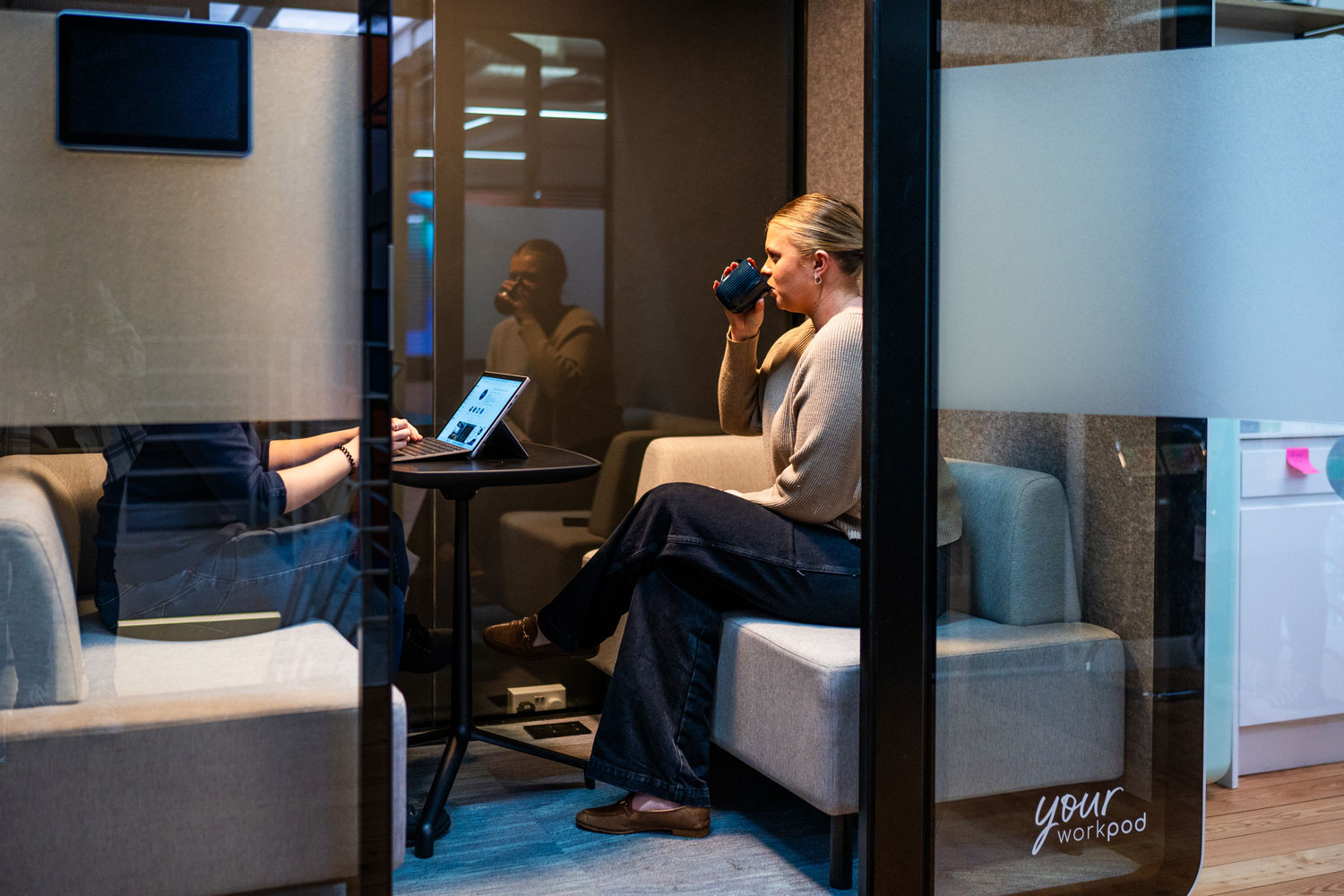In an era where work models and expectations shift faster than ever, offices need more than just desks and meeting rooms. Meeting pods are emerging as dynamic, human-centred solutions that empower teams to work smarter, not harder.
In this post, we’ll explore how meeting pods go beyond mere privacy, enabling agility, improved employee well-being and differentiated workplace design.
The Psychology of Space: Why Meeting Pods Matter
Humans respond to their surroundings more than we often realise. The layout, acoustics and visual cues of an office shape behaviour, productivity and mood.
Meeting pods offer:
- Control over environment – allowing people to step into a little “bubble” when focus or privacy is required.
- Territorial signalling – a pod visually communicates: “this is a place for focused or confidential work,” which subconsciously cues users to quiet down around it.
- Transitions between modes – walking into a pod helps shift mental modes (from collaborative bustle to deep focus).
So, these pods and booths aren’t just physical tools; they’re psychological anchors in an office ecosystem.
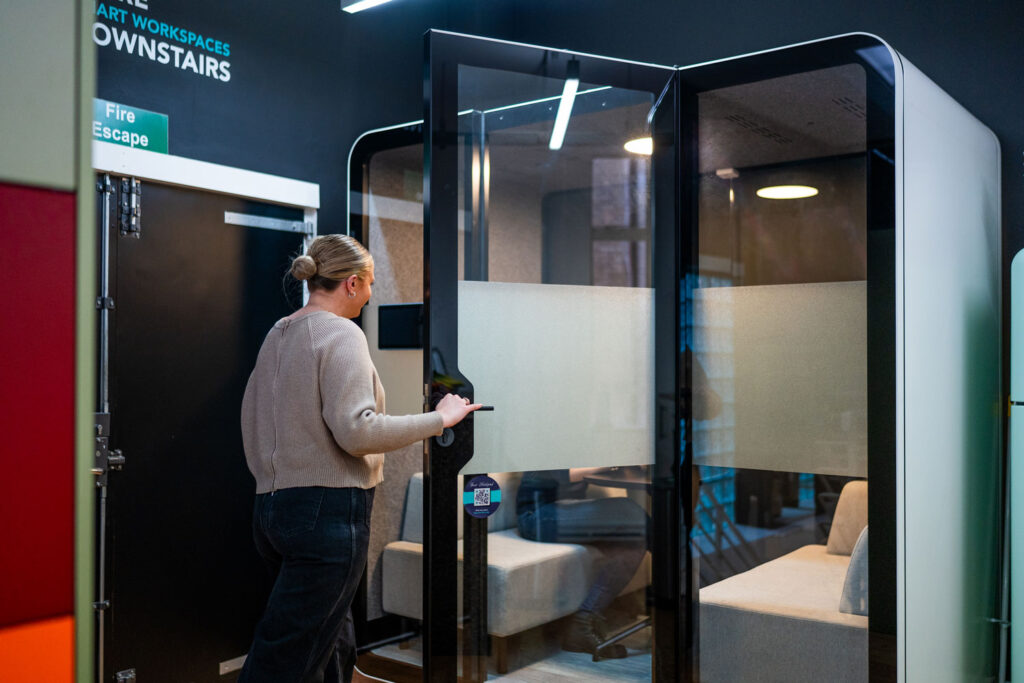
Use Cases You Might Not Have Thought Of
Beyond standard team huddles or calls, meeting pods unlock creative and unexpected use cases:
- Micro presentations and pitch rehearsals – small pods with integrated screen setups let one or two people rehearse client pitches in privacy.
- “Quiet breaks” zones – employees can use office pods just to decompress, read or engage in reflective thinking away from social activity zones.
- Interview or onboarding pods – instead of dedicating an entire meeting room, use small pods for back-to-back interviews, mentoring or onboarding conversations.
- Sidecar pods in open areas – place a mini pod adjacent to busy zones so teams have instant fallback collaboration or “plan B” space.
Work Pods as Traffic Shaping Tools
Office layouts often struggle with circulation flow, pinch points and dead zones.
Meeting pods can act as flow regulators:
- Wayfinding landmarks – pods can act like visual beacons or soft focal points, helping people navigate zones in larger spaces.
- Buffer zones – situating pods between noisy and quiet areas helps buffer sound and social spillover.
- Flexible partitions – instead of static walls or dividers, office pods can be relocated to subtly re-route foot traffic or reshape pathways.
When used strategically, meeting pods become part of the dynamic choreography of movement in an office.
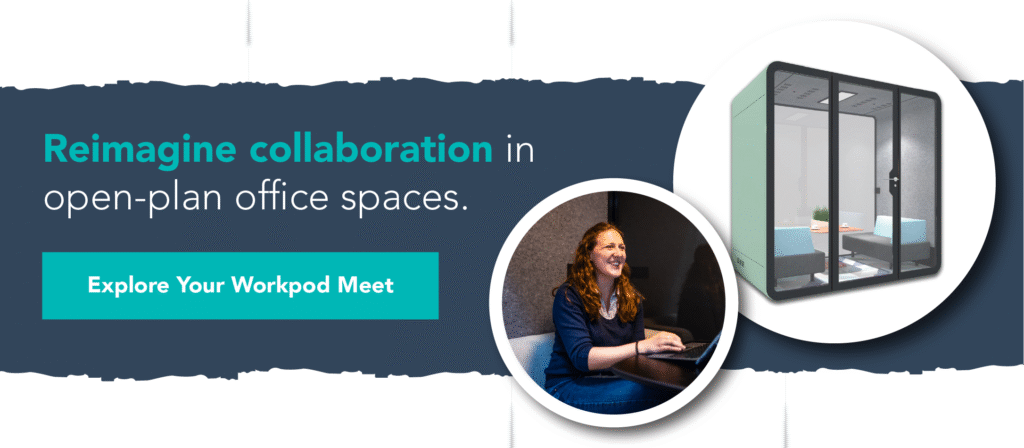
Tech-Forward Features that Future-Proof Pods
To stay relevant as workplace tech evolves, meeting pods are becoming smarter:
- IoT occupancy sensors – pods that report usage data back to a central dashboard, helping facilities managers optimise space utilisation.
- Adaptive lighting and ambient controls – pods that auto-adjust lighting, temperature or ventilation based on number of occupants or time of day.
- AR/VR support – pods preconfigured for mixed-reality collaboration, with cabling, mounting and shielding built in.
- Integration with workplace apps – users can book the pod in advance so they can come into the office with peace of mind that they will have somewhere appropriate for their work.
By integrating these capabilities, meeting pods move from static furniture to intelligent workplace nodes.
ROI from Efficiency and Engagement
Where many articles focus on cost savings from not building permanent structures, there’s a more compelling economic case:
- Reduced downtime for construction – installing pods often takes hours or days, not weeks like traditional meeting rooms.
- Better asset utilisation – pods can be rented, upgraded or redeployed, deferring capital costs tied to fixed walls.
- Reduced meeting overflows – instead of booking large rooms inefficiently, pods absorb many of the small meeting needs.
- Employee retention and satisfaction – giving your staff better control over their environment is a perk that pays dividends in engagement and retention.
When you layer these benefits, the total return on investing in meeting pods becomes more attractive.
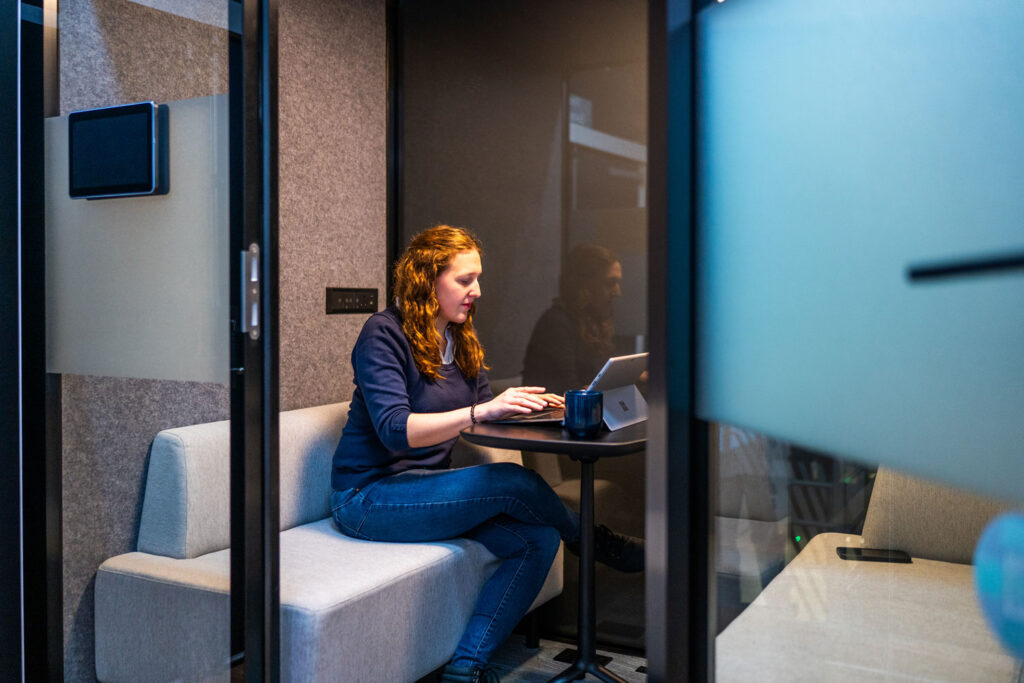
Implementation Best Practices and Pitfalls to Avoid
To maximise impact, consider these tips:
- Balance clusters and dispersion – distributing smaller pods across zones often beats clustering all pods in one “pod bank.”
- Don’t over-spec the largest size first – start with smaller units to test adoption and discover ideal sizes.
- Ensure air circulation and comfort – even a beautifully designed pod will fail if it becomes stuffy or too warm inside.
- Plan cable and connectivity early – pods with power and network issues are quickly abandoned.
- Train users and share etiquette – set guidelines or implement booking systems so that pods don’t become conflict zones.
- Monitor usage – track what types of pods get used most, at what times, and adapt your inventory and office layout accordingly.
Measuring Success
To know whether your work pod program is working, track:
- Utilisation rate – what percentage of hours the pods are in use.
- Seat turnover – how many different users per day.
- Booking rejection rates (if applicable) – indicates demand exceeding supply.
- Employee feedback – qualitative input on usefulness, comfort and pain points.
- Acoustic spillover data – check whether pods reduce noise complaints in surrounding areas.
These data points allow refinement and optimisation over time.
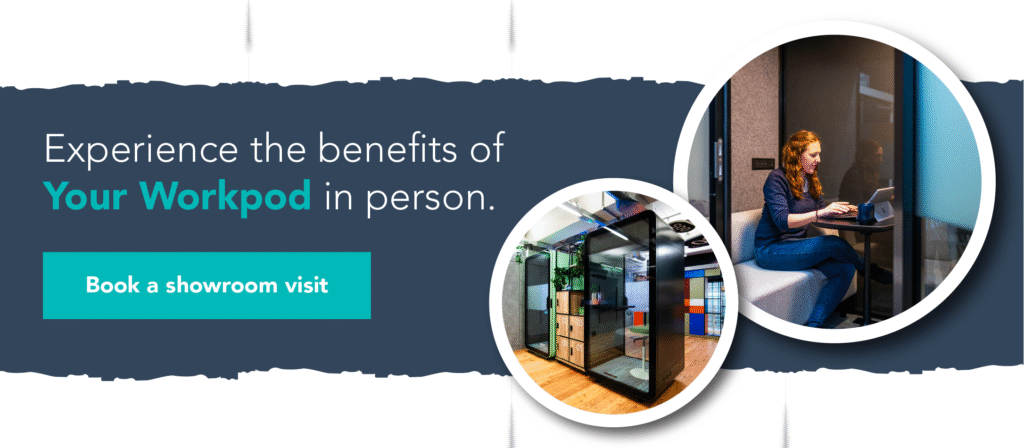
Contact Us
Are you ready to upgrade your workplace with meeting pods? We can help you select, customise and implement the right office pod for your needs.
Call our workplace experts on 01621 855053 or send us a message at info@yourworkspace.com. We’d be happy to help!
